In October, Adam and I spent a week in Cancun with his mom and brother, Luke. We stayed in a resort and had a lot of fun. One of the interesting things about visiting other places, at least for people who geek out about domestic and civic landscapes like me, is seeing where and how people there live.
A resort is very comfortable but it’s kind of a “nowhere” place. Its comfortable, beautiful, and user friendly – Paradise.
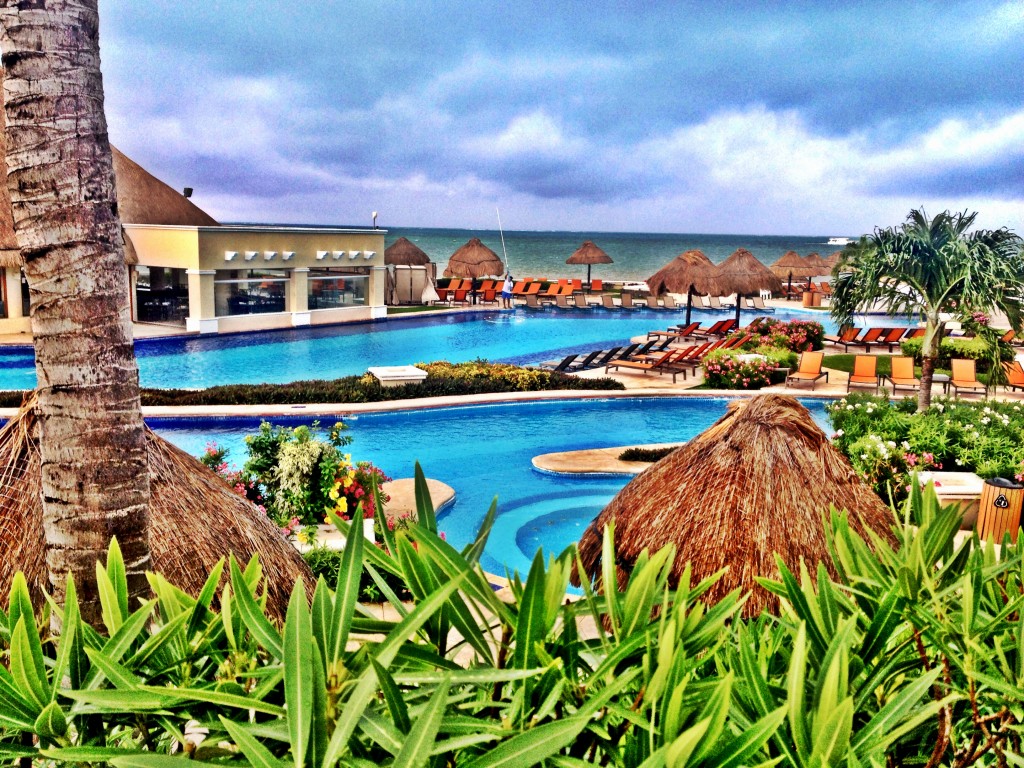 Paradise is Paradise because it’s separate from real places, where there’s ordinary, boring, frustrating, painful everyday life. Suburbs were also designed to be a little like a “no place,” where things seem lovely, well kept, and ideal. When people move in that veneer begins to wear away, but that’s a whole other post.
Paradise is Paradise because it’s separate from real places, where there’s ordinary, boring, frustrating, painful everyday life. Suburbs were also designed to be a little like a “no place,” where things seem lovely, well kept, and ideal. When people move in that veneer begins to wear away, but that’s a whole other post.
On the day we got on a bus for a day trip to Chichen Itza, we saw a little less Paradise and a little more Reality. (These were taken from a moving bus – which both worsens and makes them more real.)
Grass roofs, a bike with a basket for hauling, hammocks for sleeping and lounging, and dirt floors. (Many of the rooms in our resort had hammocks on the balconies, too, but it’s not quite the same, is it?)
The bus trip cut through miles and miles of jungle. Towns were actually rare. It was a bit dizzying to look out the windows sometimes: like we were passing through a long low tunnel of brush. The tour guide stopped the bus at a clearing to show us a big tree with criss-cross marks slashed in the trunk, left from one of the plantations that used to cover the Yucatan and harvested chewing gum resin.
We also drove through Valladolid, an old colonial city built by the Spanish. Well, built after they drove out all the Maya tribal people and tore their buildings down first. Because, of course, Europeans knew the “right” way to build a city. It still looks very much the same, apparently, with both European and Mayan-looking citizens in the streets. (Whose pictures I was too shy to take. I felt enough like a gawking tourist as it was, peering down on them from our giant tour bus. They didn’t look poor – but it’s a bit odd to be someone so obviously “looking.”)
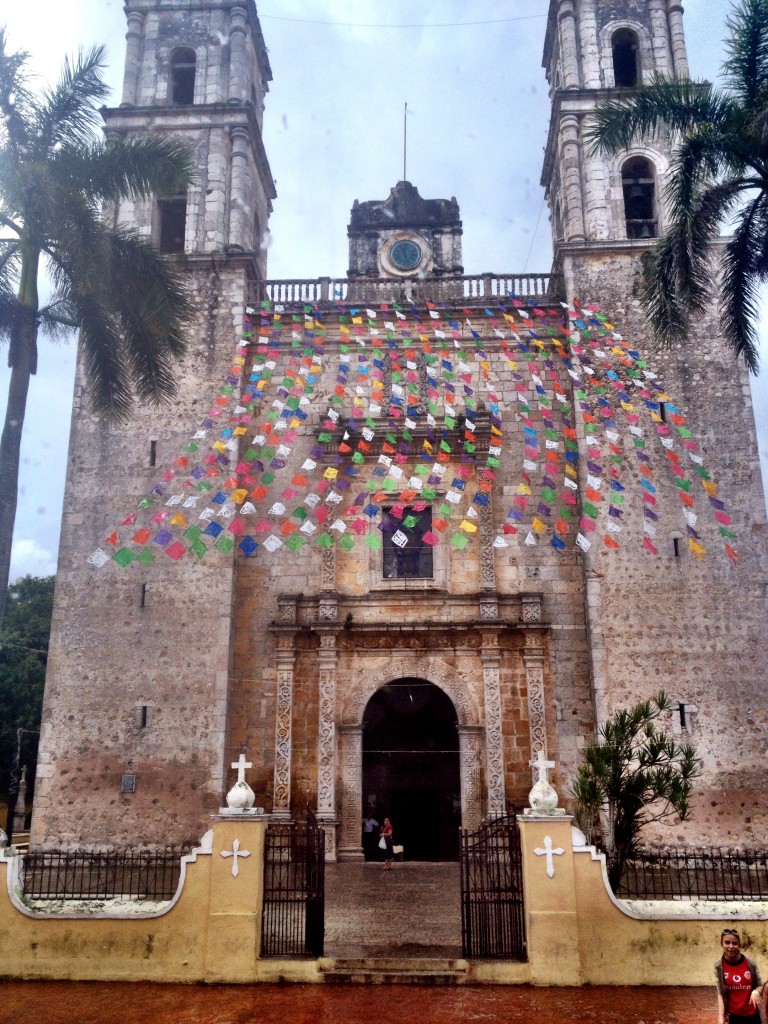 The original Spanish mission church, built in the 15th century! I like the young woman who ended up in the bottom right corner, too. (Note the flags in honor of the Dia de los Muertos.)
The original Spanish mission church, built in the 15th century! I like the young woman who ended up in the bottom right corner, too. (Note the flags in honor of the Dia de los Muertos.)
I really liked seeing Valladolid, even from my Perch Of Privilege on the tour bus. It was good to see a real, living place; not just the resort and the ruins.
Chichen Itza was strange and mysterious. It’s pretty basic for a national park – no museum or learning center, and little signage. It’s overflowing with hawkers and souvenir stands. But it’s a glimpse of a civilization that disappeared long ago (12th C.): their big buildings, violent ball games (to the death), and gorgeous sense of design and symmetry. It was all covered over by jungle until about 100 years ago, when industrialists Andrew Carnegie and John Rockefeller put their fortunes to good use and paid to have the site uncovered, studied, and preserved.
It was a full day trip. Chichen Itza (not “Chicken Pizza,” as our tour guide pointed out, which he claimed some English speakers prefer to say) is a full 2.5 hour drive from the coast.
And we passed more hamlets and crossroads, interspersed here and there in the midst of the jungle.
Cancun used to be just another hamlet on the Yucatan Pennisula. Then, in about 1970, the Mexican government decided to develop it as a tourist area, and what used to be a village of 23 families became what is now a gigantic vacation and resort area – now the most populous in Mexico with its busiest international airport.
It’s not a preservationists’ dream, but it does bring a steady, generous income to the Mexican people. And while very much in the tradition of the conquistadors, the developers are giving the local Maya jobs, language education, infrastructure, and steady paychecks. At our resort, there was a language school underneath one of the recreation centers where employees learned Spanish (most only speak Maya), English, French, and Portuguese.
It was nice just to sit by the pool and read, enjoy family, eat good food, and sleep in, but I like learning about the places I visit, too, and seeing something of the lives of the people who live there.
Family photo with rainy season tropical sky:
Well, don’t make yourself entirely at home. This is a family resort!
(We’re enjoying playing at offense to our freedom of expression but of course, Kate and I are quite the Puritan Midwesterners.)
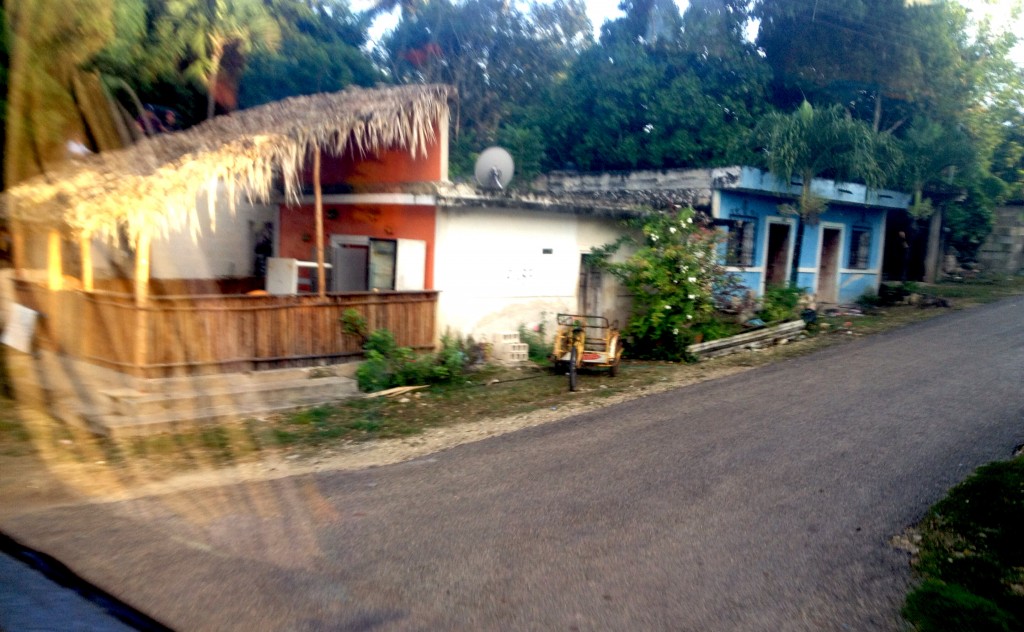
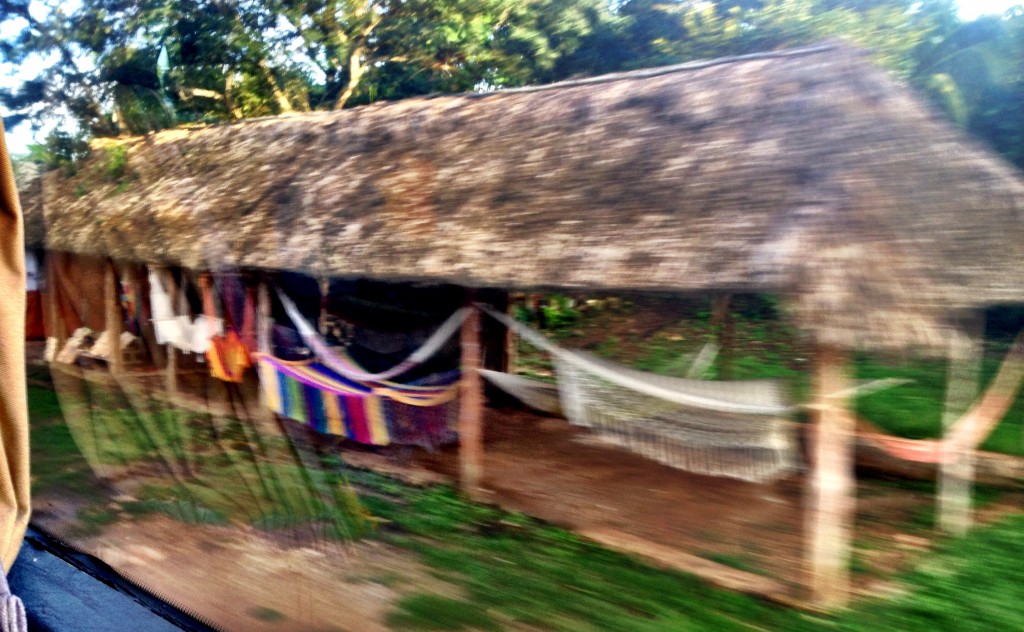
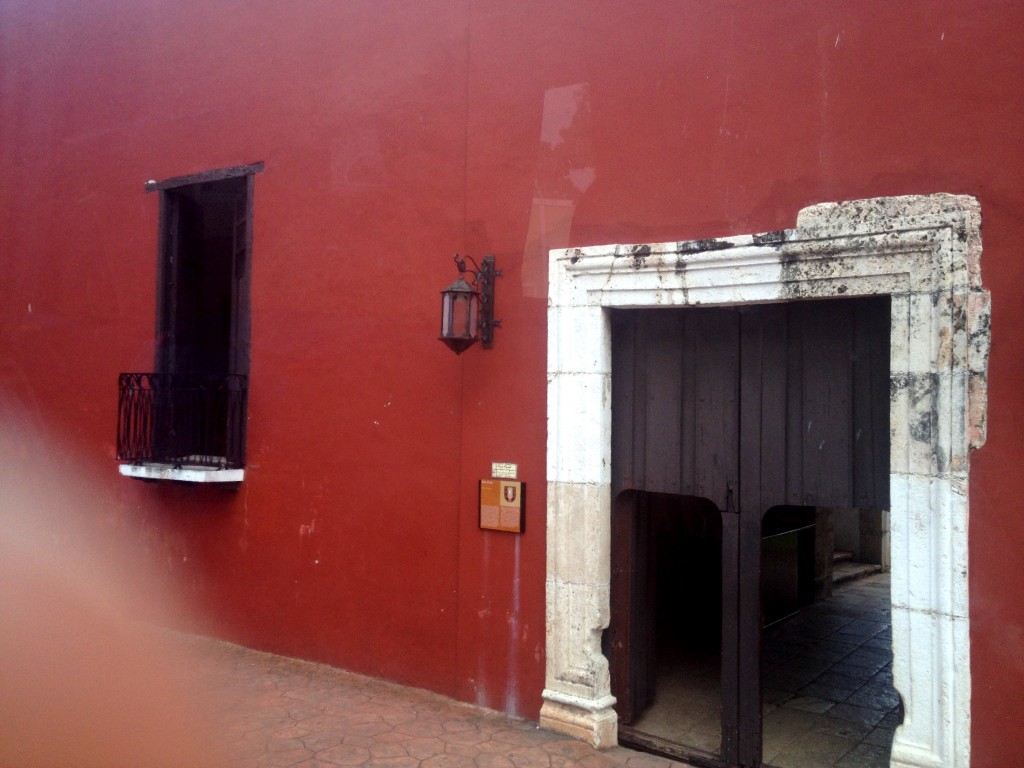
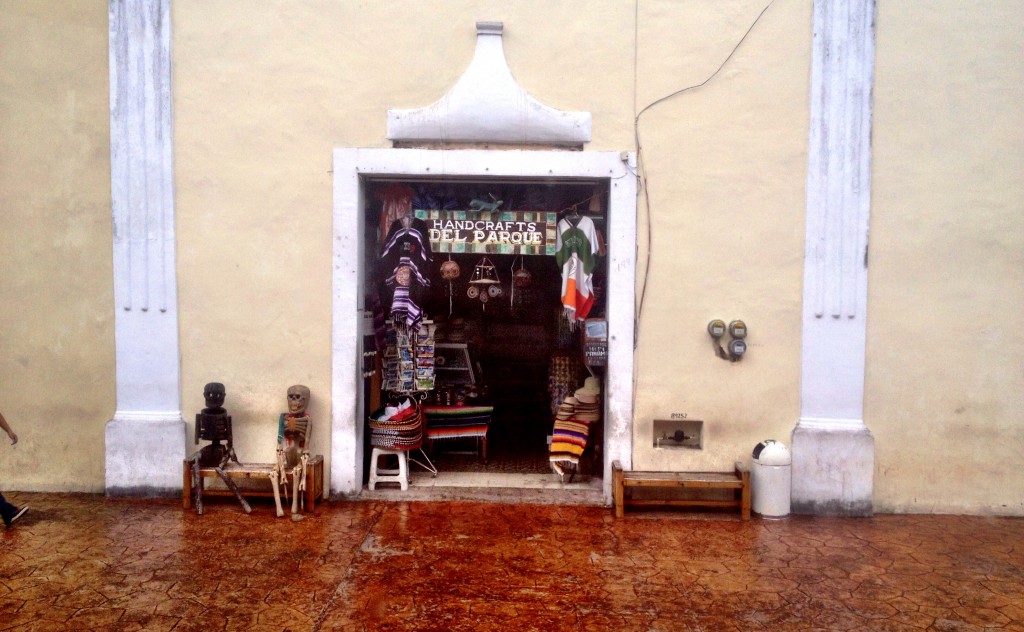
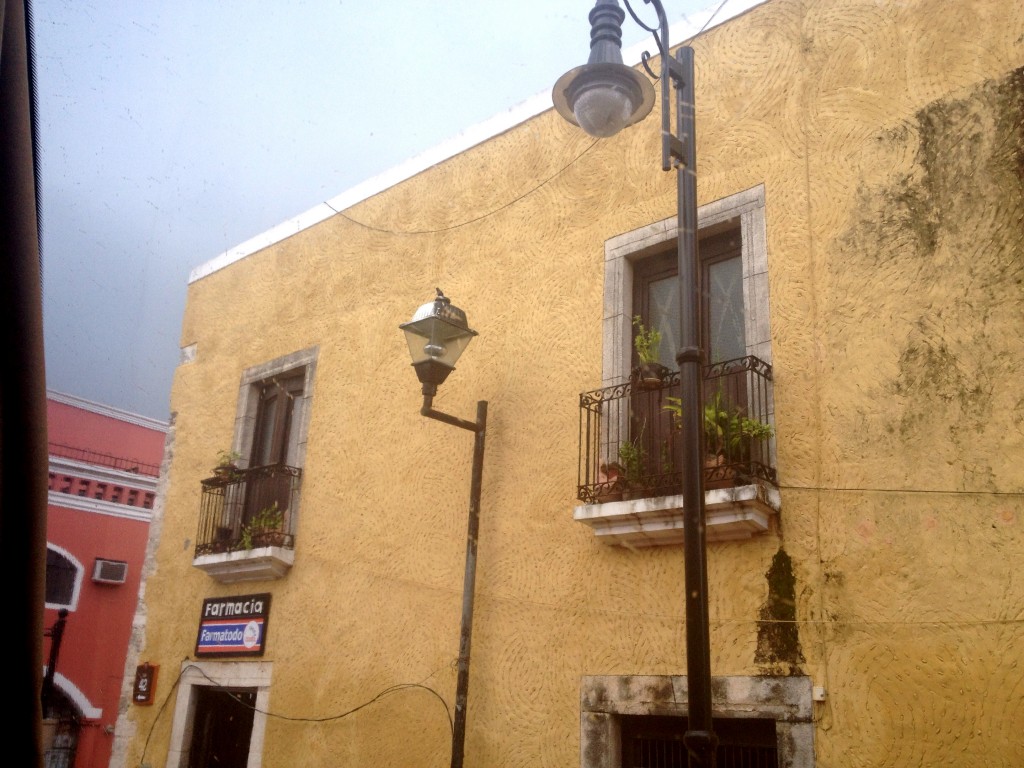
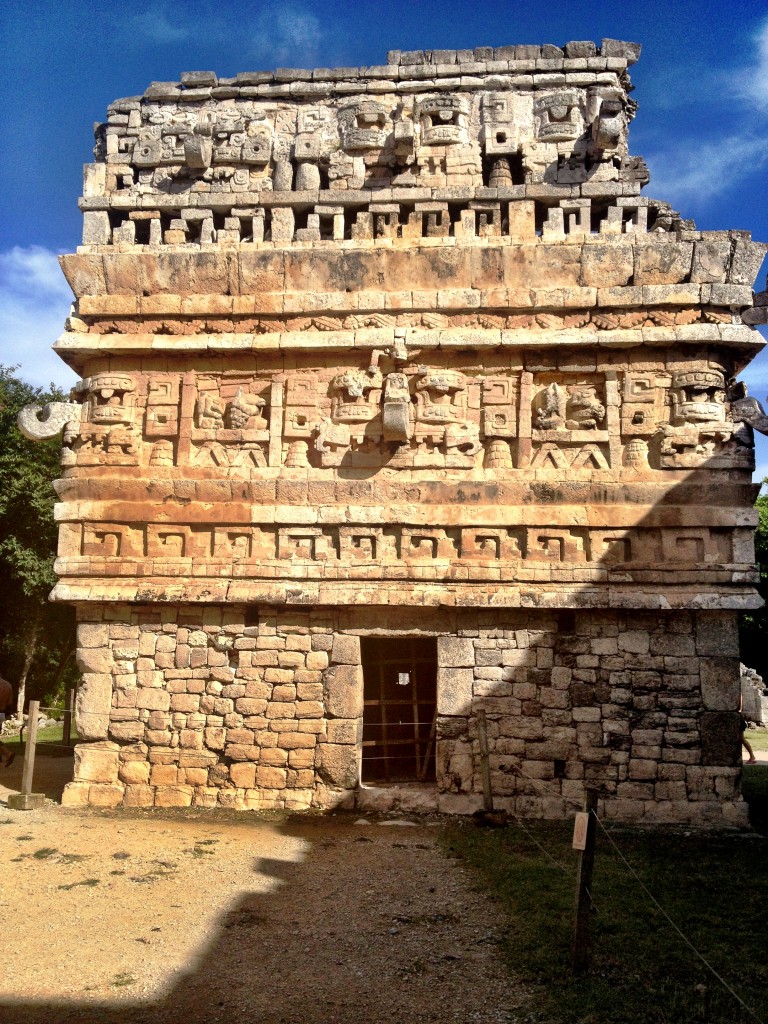
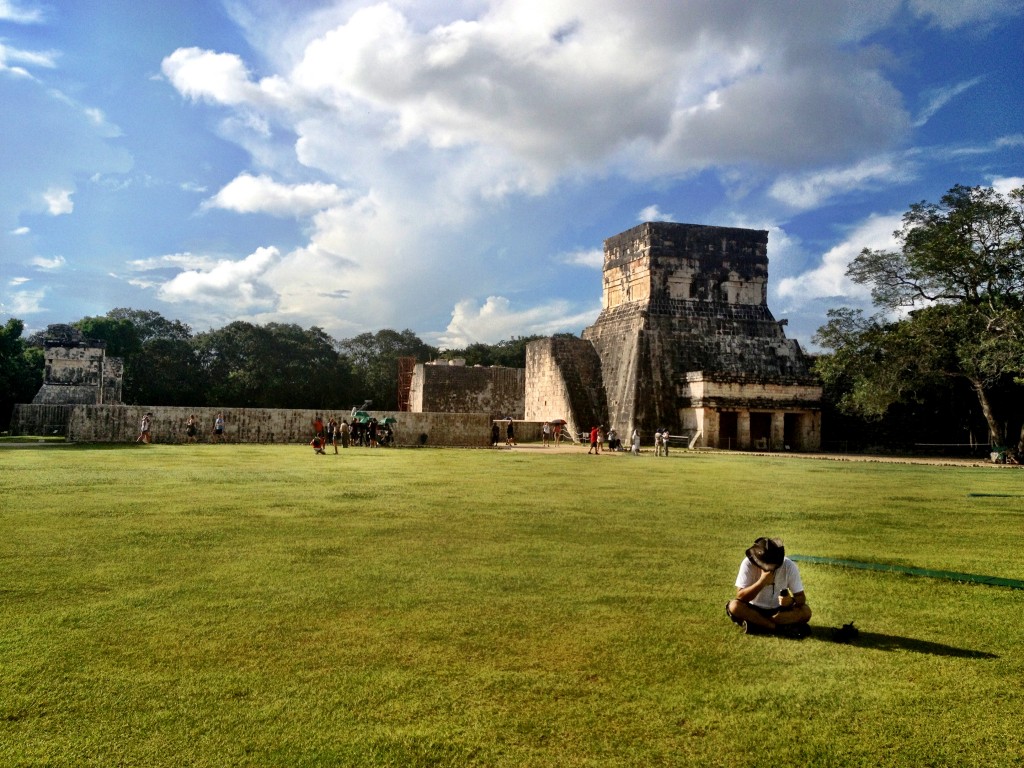
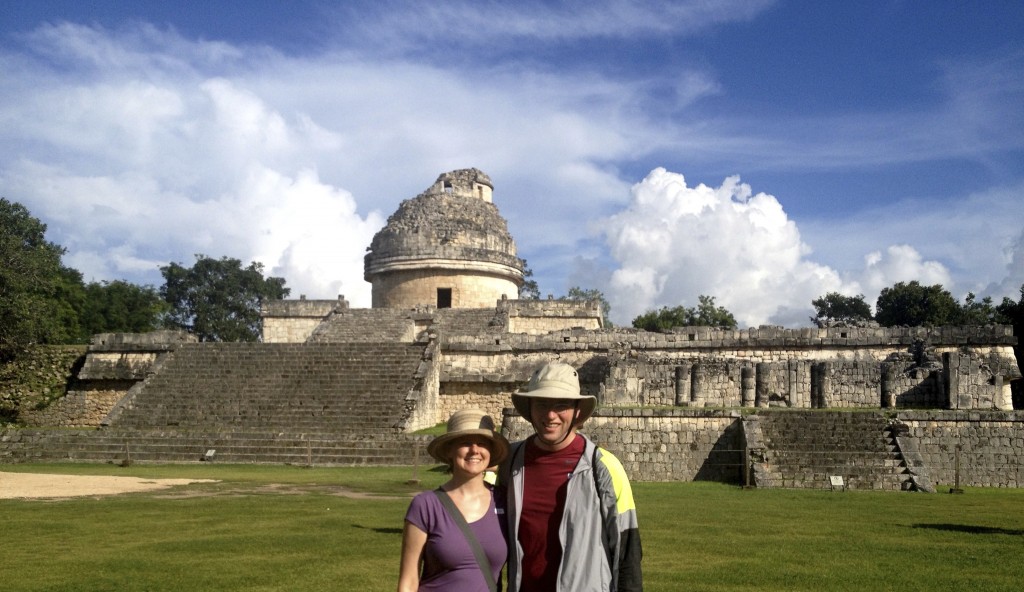
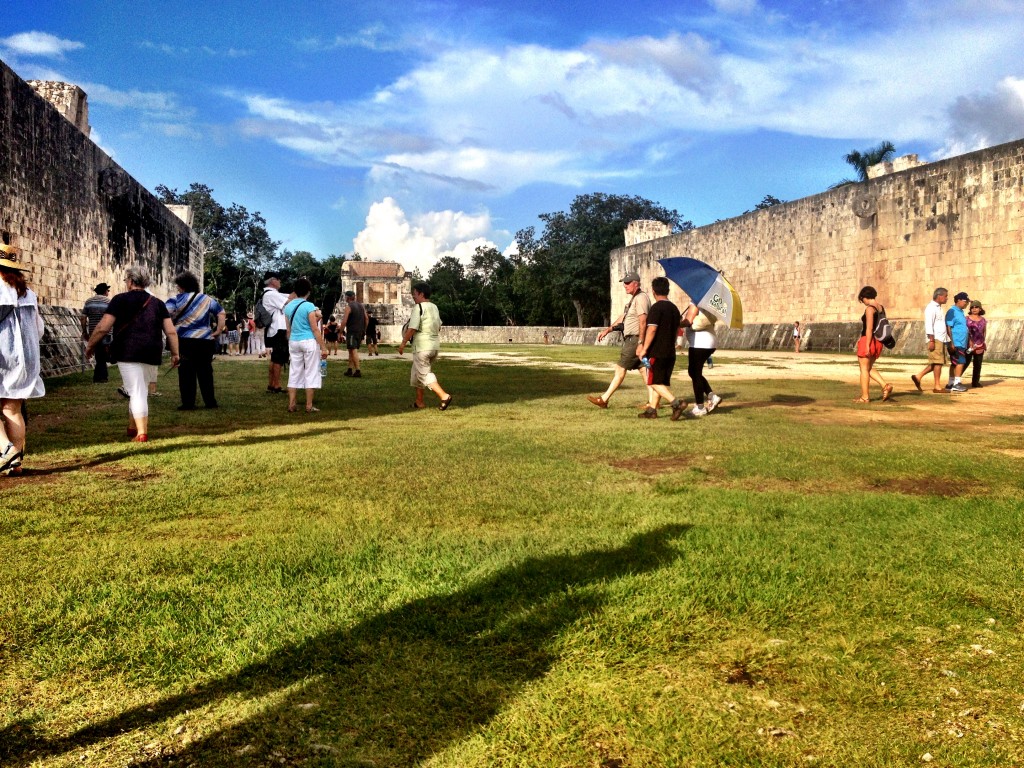
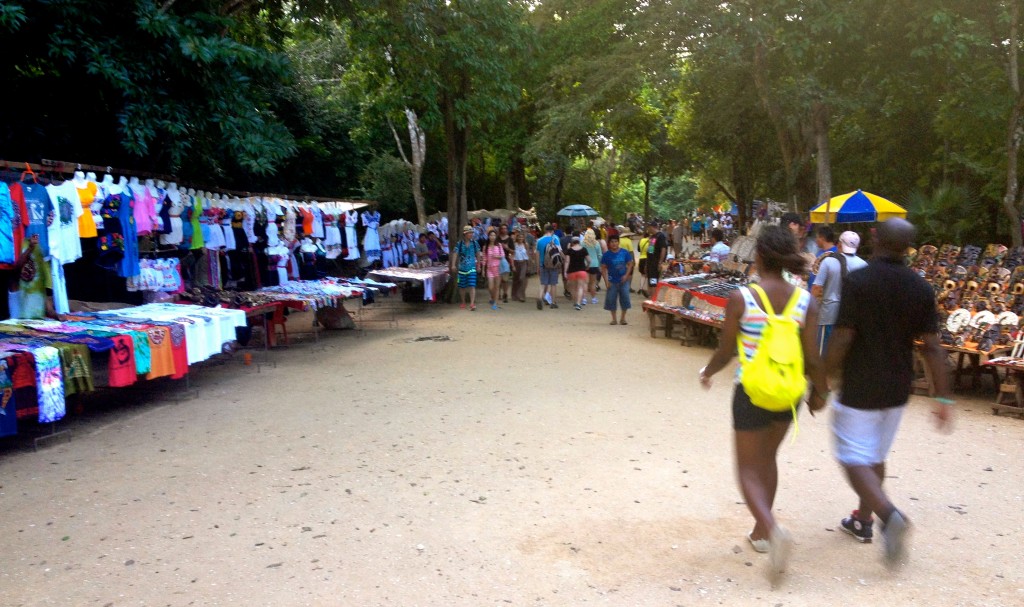
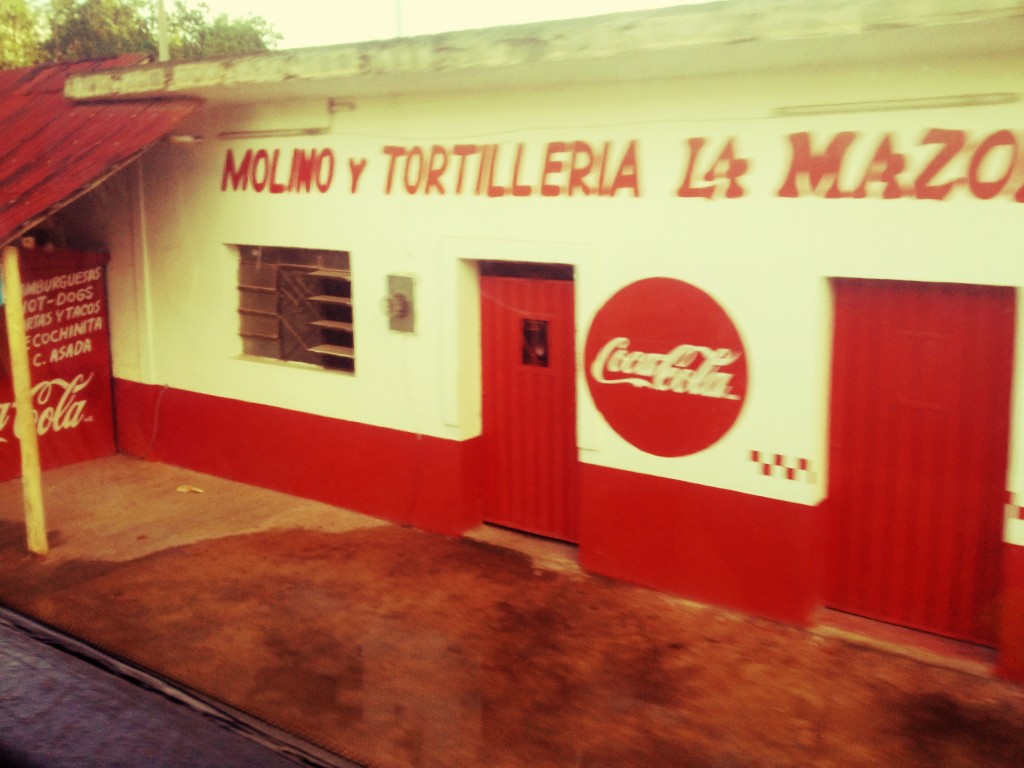
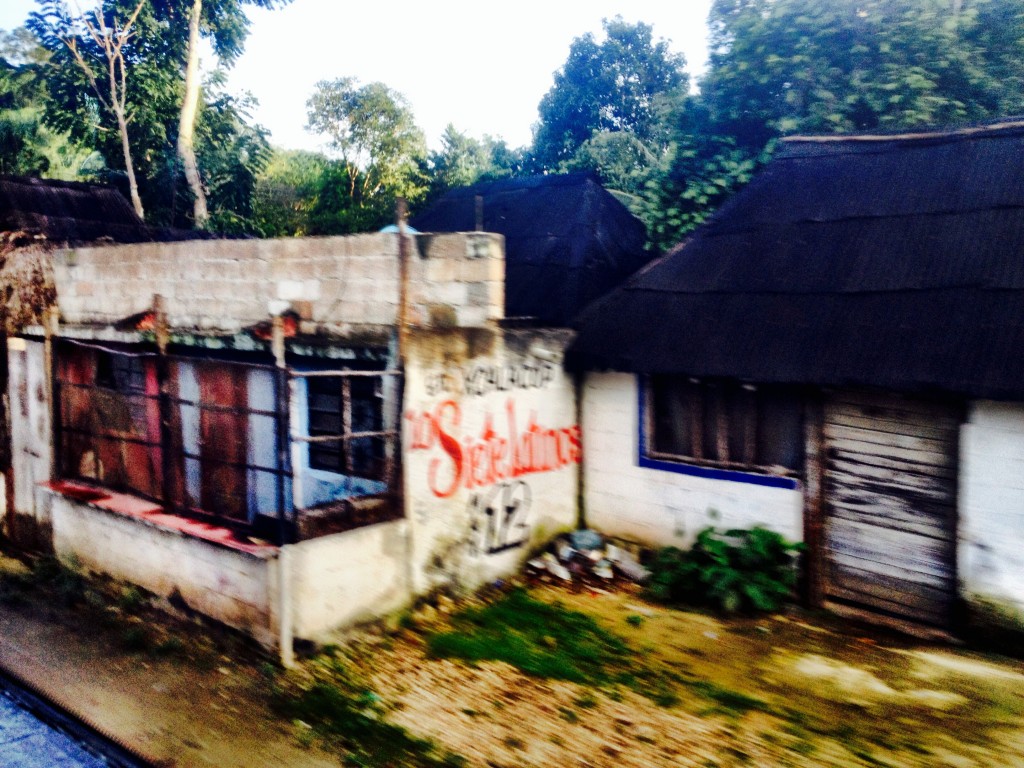
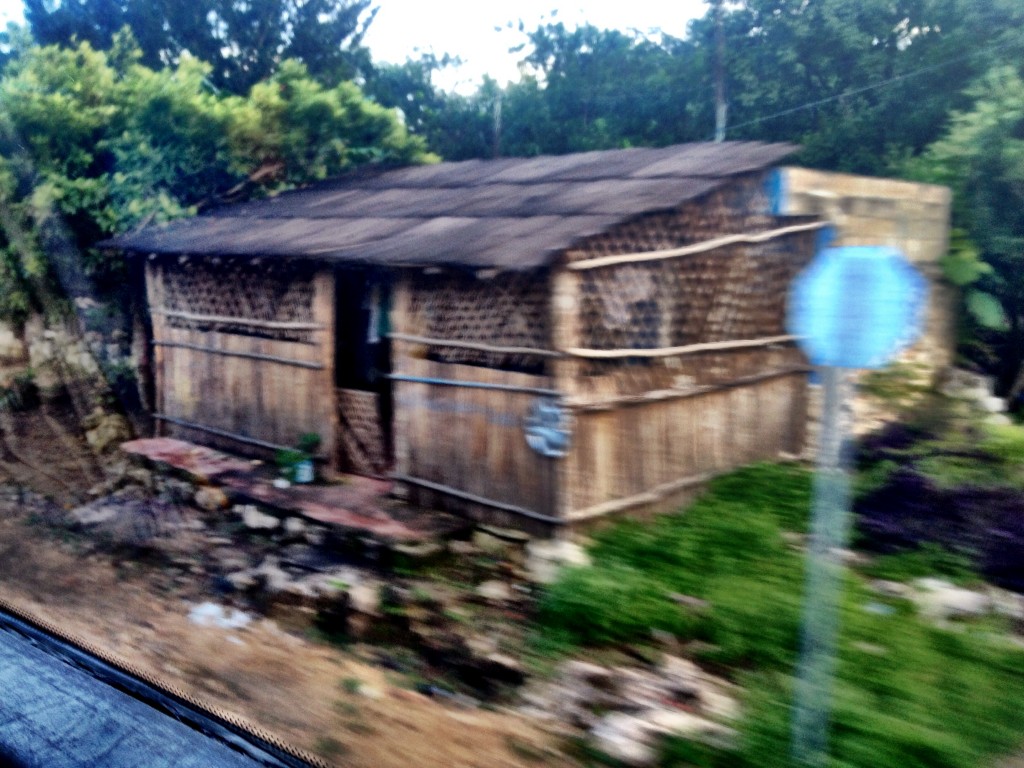
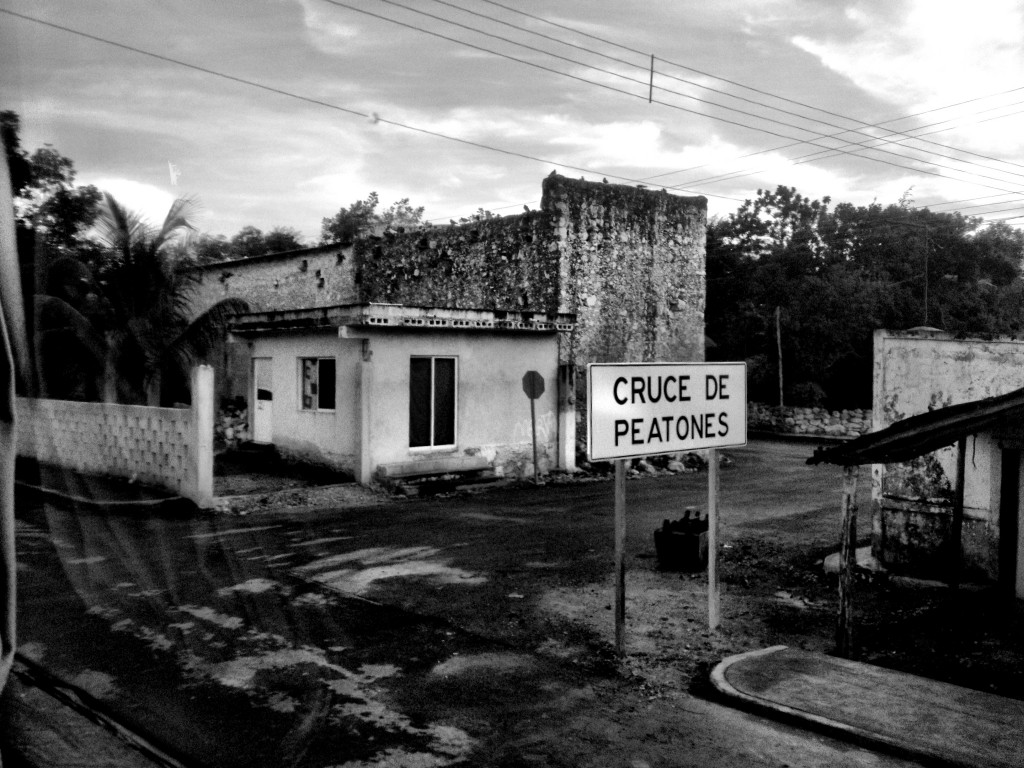
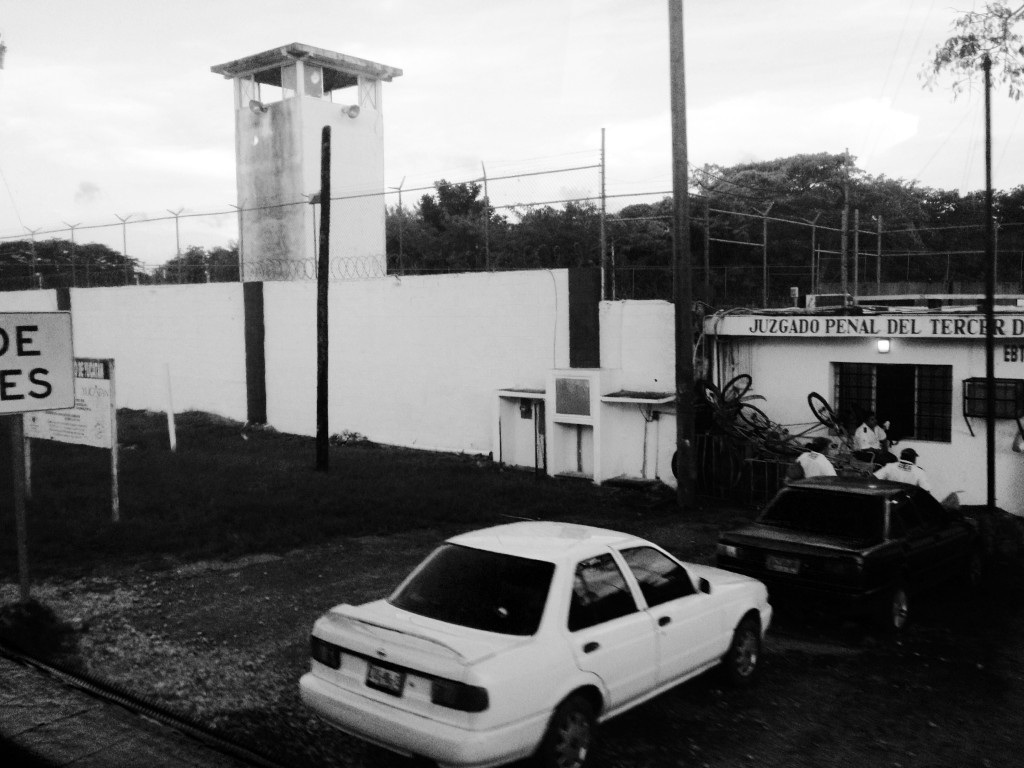
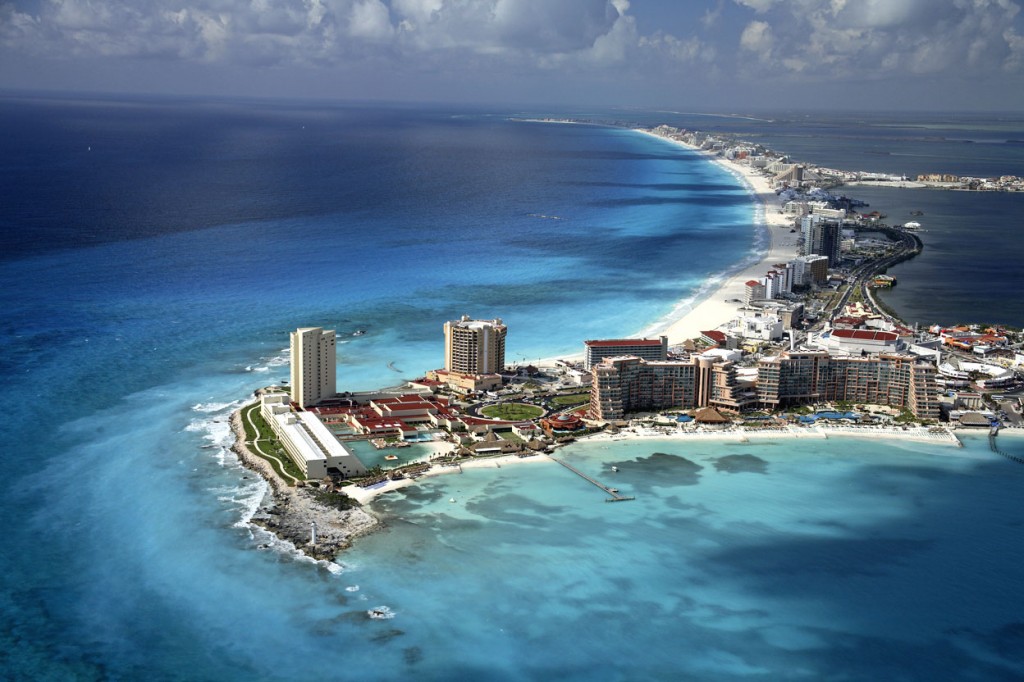
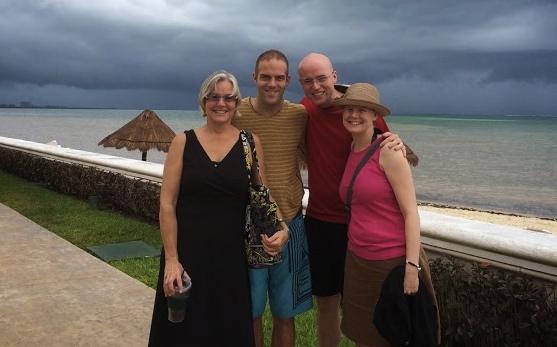
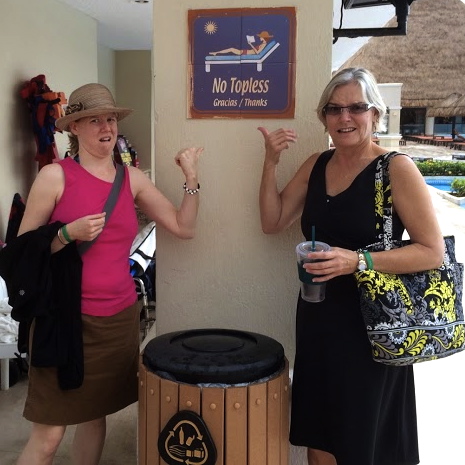



not good enough !!